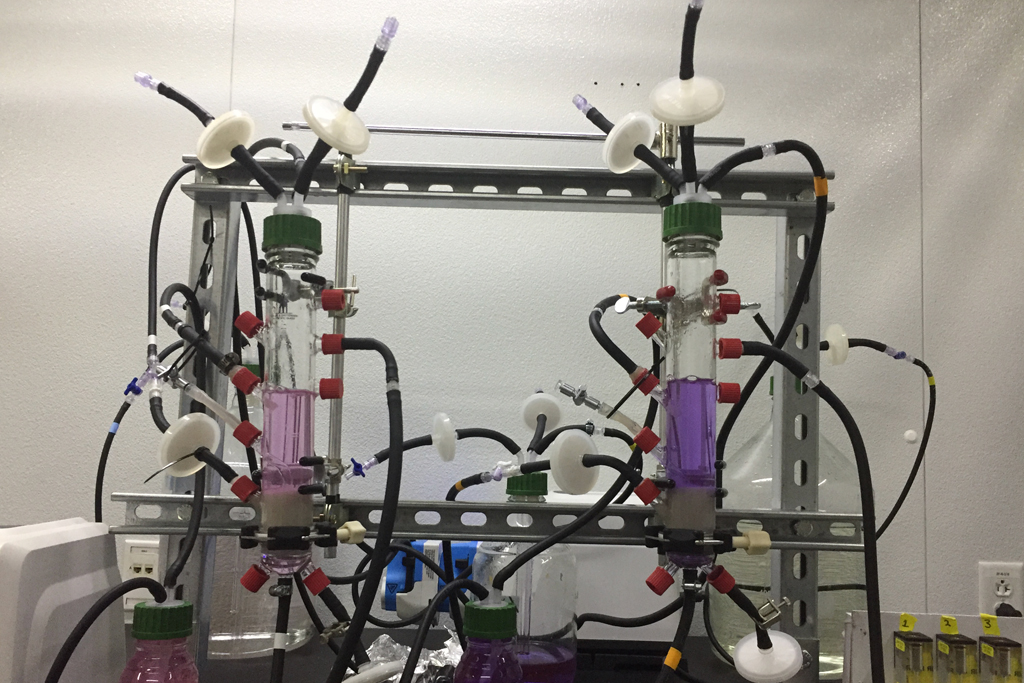
The Environmental Simulation and Modeling campaign (EnvSim) has strategically aligned efforts across ENIGMA to investigate to ecologically important phenomena observed at the Oak Ridge Reservation (ORR). For example, field observations indicated that sulfate respiration and nitrate respiration processes operate in mutual exclusivity down the transect of a sediment core. Using the field isolate (Intrasporangium calvum C5) this phenomenon was simulated and the mechanistic underpinnings delineated through laboratory investigations.
Insights from this study are currently being tested back at the ORR using groundwater chemostats to demonstrate the “field-to-lab-to-field” iteration model employed across ENIGMA for investigating a phenomenon that emerged through the investigations of complex interactions within a microbial community. Another set of hypotheses being tested by the EnvSim campaign involve the interplay of biotic and abiotic factors that lead to N 2 O emissions at the ORR. It has been shown that in ORR wells which have a lower pH (~6.5 – 3) tend to have higher concentrations of N 2 O. The EnvSim campaign has deduced four potential mechanisms that may account for the N 2 O emissions at the ORR and are currently being investigated by labs across ENIGMA. We use different reactor systems to answer distinct questions, which provides important information and data that can be directed into our predictive models. For instance, we are using sophisticated column reactors and highly controlled, constantly stirred, planktonic reactors to study how microbial community structure and function changes in response to pH shifts, oxygen concentrations, and sulfurous compounds. Batch culture experiments are being used to study the abiotic and biotic impacts of metals on denitrification processes. In addition, transcriptomic analysis of these experiments are aiding the construction of a metabolic and gene regulatory network model. Importantly, the work being conducted by the EnvSim campaign illustrates the field-to-lab and lab-to-field framework of the ENIGMA campaign strategy.
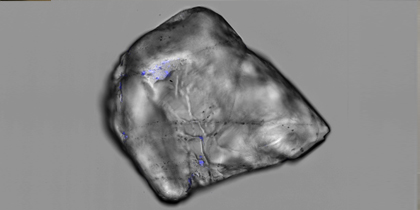
Relevant Publications
 Goff Uses KBase to Analyze Genetic Factors Impacting Microbial Fitness in Contaminated Environments - A recent KBase community highlight summarized research accomplishments from Jennifer Goff, who was a postdoctoral researcher with the ENIGMA Science Focus Area in Mike Adams' lab at the University of Georgia (UGA) and is now a professor at SUNY College of Environmental Science and Forestry (ESF). Several of her team’s latest studies, which used KBase to conduct large-scale genetic analyses,… Relevant Publication →
Goff Uses KBase to Analyze Genetic Factors Impacting Microbial Fitness in Contaminated Environments - A recent KBase community highlight summarized research accomplishments from Jennifer Goff, who was a postdoctoral researcher with the ENIGMA Science Focus Area in Mike Adams' lab at the University of Georgia (UGA) and is now a professor at SUNY College of Environmental Science and Forestry (ESF). Several of her team’s latest studies, which used KBase to conduct large-scale genetic analyses,… Relevant Publication →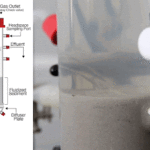 From Field-to-Lab and Lab-to-Field: How Microbes Evolve, Form Partnerships and Work Together - Researchers in the Institute for Systems Biology’s Baliga Lab examined model organisms from two classes of microbes whose interaction converts over a gigaton of carbon to methane each year and found that gene mutations selected for over a relatively short timeframe in the two microbes –Desulfovibrio vulgaris (Dv) and Methanococcus maripaludis (Mm)– led to distinct functions, specifically ecotypes, or sub-populations,… Relevant Publication →
From Field-to-Lab and Lab-to-Field: How Microbes Evolve, Form Partnerships and Work Together - Researchers in the Institute for Systems Biology’s Baliga Lab examined model organisms from two classes of microbes whose interaction converts over a gigaton of carbon to methane each year and found that gene mutations selected for over a relatively short timeframe in the two microbes –Desulfovibrio vulgaris (Dv) and Methanococcus maripaludis (Mm)– led to distinct functions, specifically ecotypes, or sub-populations,… Relevant Publication →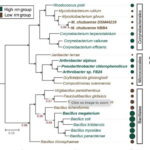 Bacterial community composition impacts the transformation of carbon in soils - Microorganisms have evolved various life-history strategies to survive fluctuating resource conditions in soils. However, it remains elusive how the life-history strategies of microorganisms influence their processing of organic carbon, which may affect microbial interactions and carbon cycling in soils. Here, ENIGMA researchers characterized the genomic traits, exometabolite profiles, and interactions of soil bacteria representing copiotrophic and oligotrophic strategists. I Relevant Publication →
Bacterial community composition impacts the transformation of carbon in soils - Microorganisms have evolved various life-history strategies to survive fluctuating resource conditions in soils. However, it remains elusive how the life-history strategies of microorganisms influence their processing of organic carbon, which may affect microbial interactions and carbon cycling in soils. Here, ENIGMA researchers characterized the genomic traits, exometabolite profiles, and interactions of soil bacteria representing copiotrophic and oligotrophic strategists. I Relevant Publication →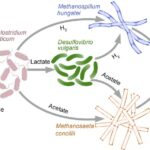 To Study Competition and Cross-Feeding, Scientists Build Synthetic Microbiomes - A new study investigated complex interactions among four cross-feeding microorganisms in a synthetic community (SynCom) that converts cellulose to methane and carbon dioxide, paving the way toward a more predictive understanding of the impact of environmental perturbations on microbial interactions sustaining geochemically significant processes in natural systems. Relevant Publication →
To Study Competition and Cross-Feeding, Scientists Build Synthetic Microbiomes - A new study investigated complex interactions among four cross-feeding microorganisms in a synthetic community (SynCom) that converts cellulose to methane and carbon dioxide, paving the way toward a more predictive understanding of the impact of environmental perturbations on microbial interactions sustaining geochemically significant processes in natural systems. Relevant Publication →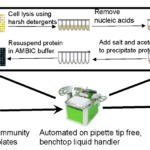 Novel Protocol Leverages Automatic Liquid Transfer to Prepare Hundreds of Microbial Cell Cultures for Proteomic Analysis - ENIGMA researchers detailed a step-by-step protocol that consists of cell lysis in alkaline chemical buffer (NaOH/SDS) followed by protein precipitation with high-ionic strength acetone in 96-well format. This protocol, combined with previously established automated protein quantification and protein normalization protocols, provides a rapid, cost-effective method to prepare LC-MS proteomic samples from bacteria and non-filamentous fungi cell cultures. Relevant Publication →
Novel Protocol Leverages Automatic Liquid Transfer to Prepare Hundreds of Microbial Cell Cultures for Proteomic Analysis - ENIGMA researchers detailed a step-by-step protocol that consists of cell lysis in alkaline chemical buffer (NaOH/SDS) followed by protein precipitation with high-ionic strength acetone in 96-well format. This protocol, combined with previously established automated protein quantification and protein normalization protocols, provides a rapid, cost-effective method to prepare LC-MS proteomic samples from bacteria and non-filamentous fungi cell cultures. Relevant Publication →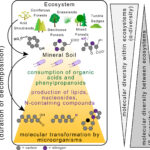 Decomposition Decreases Molecular Diversity and Ecosystem Similarity of Soil Organic Matter - ENIGMA researchers collaborated with the Lehmann Lab at Cornell University to find that microbial decomposition drives significant variability in the molecular richness and diversity of soil organic matter between soil horizons and ecosystems. Relevant Publication →
Decomposition Decreases Molecular Diversity and Ecosystem Similarity of Soil Organic Matter - ENIGMA researchers collaborated with the Lehmann Lab at Cornell University to find that microbial decomposition drives significant variability in the molecular richness and diversity of soil organic matter between soil horizons and ecosystems. Relevant Publication → Using microcalorimetry and thermodynamic modeling to examine effects of thermal stress - Hunt KA, von Netzer F, Gorman-Lewis D, Stahl DA. (2022) Microbial maintenance energy quantified and modeled with microcalorimetry. Biotechnol Bioeng. 2022 Jun 9; [DOI]:10.1002/bit.28155. {PMID}: 35680566 OSTI:1874049 All known biology is driven by the partitioning of energy released from nutrient consumption, either into building new cells or maintaining cellular integrity required for viability. The energy invested in maintaining viable cellular… Relevant Publication →
Using microcalorimetry and thermodynamic modeling to examine effects of thermal stress - Hunt KA, von Netzer F, Gorman-Lewis D, Stahl DA. (2022) Microbial maintenance energy quantified and modeled with microcalorimetry. Biotechnol Bioeng. 2022 Jun 9; [DOI]:10.1002/bit.28155. {PMID}: 35680566 OSTI:1874049 All known biology is driven by the partitioning of energy released from nutrient consumption, either into building new cells or maintaining cellular integrity required for viability. The energy invested in maintaining viable cellular… Relevant Publication →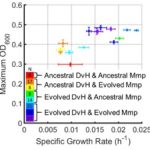 Automating Culturing Technology Aids In Scaling Bacterial Growth Experiments - An automated multiplexed turbidometric and data collection system for measuring growth kinetics of anaerobes dependent on gaseous substrates Hunt, KA; J Forbes, F Taub, N Elliott, J Hardwicke, R Petersen, N Stopnisek, DAC Beck, DA Stahl; Journal of Microbiological Methods, [DOI]:10.1016/j.mimet.2021.106294 For decades, the cloudiness (turbidity) of a culture has been used to monitor the growth of microbes. Some microbes… Relevant Publication →
Automating Culturing Technology Aids In Scaling Bacterial Growth Experiments - An automated multiplexed turbidometric and data collection system for measuring growth kinetics of anaerobes dependent on gaseous substrates Hunt, KA; J Forbes, F Taub, N Elliott, J Hardwicke, R Petersen, N Stopnisek, DAC Beck, DA Stahl; Journal of Microbiological Methods, [DOI]:10.1016/j.mimet.2021.106294 For decades, the cloudiness (turbidity) of a culture has been used to monitor the growth of microbes. Some microbes… Relevant Publication →